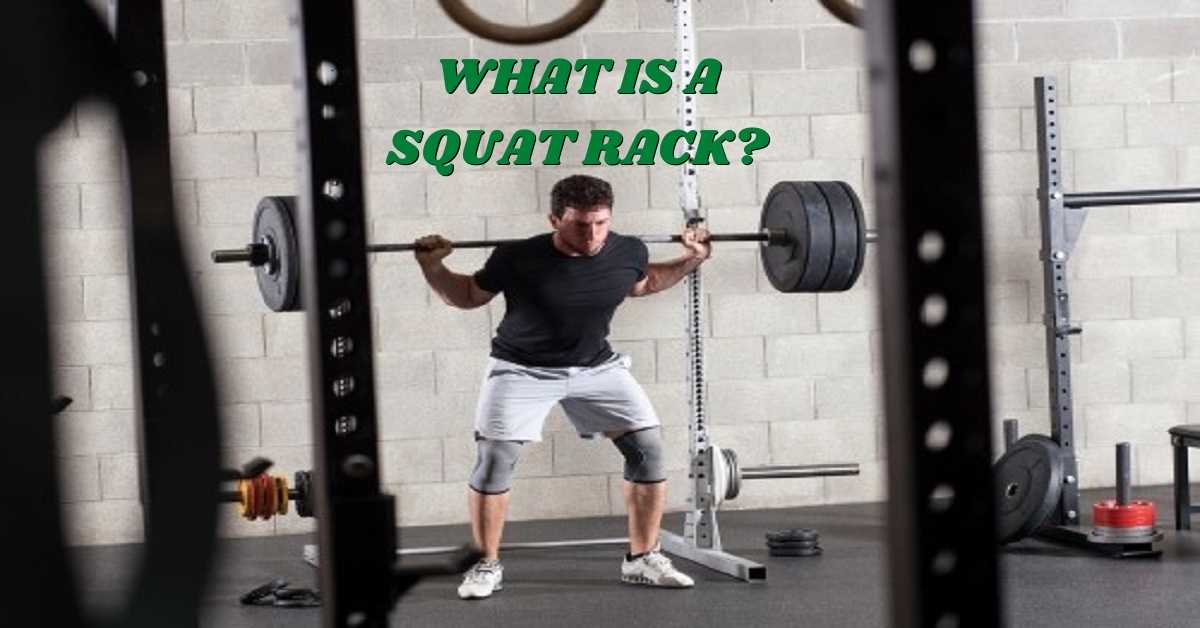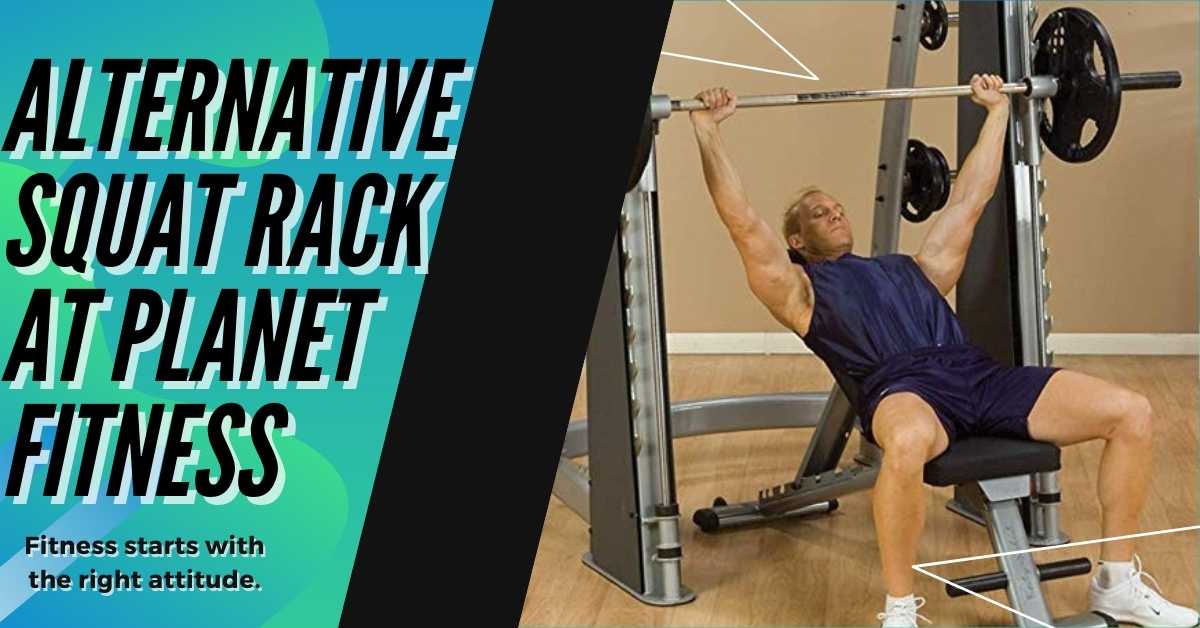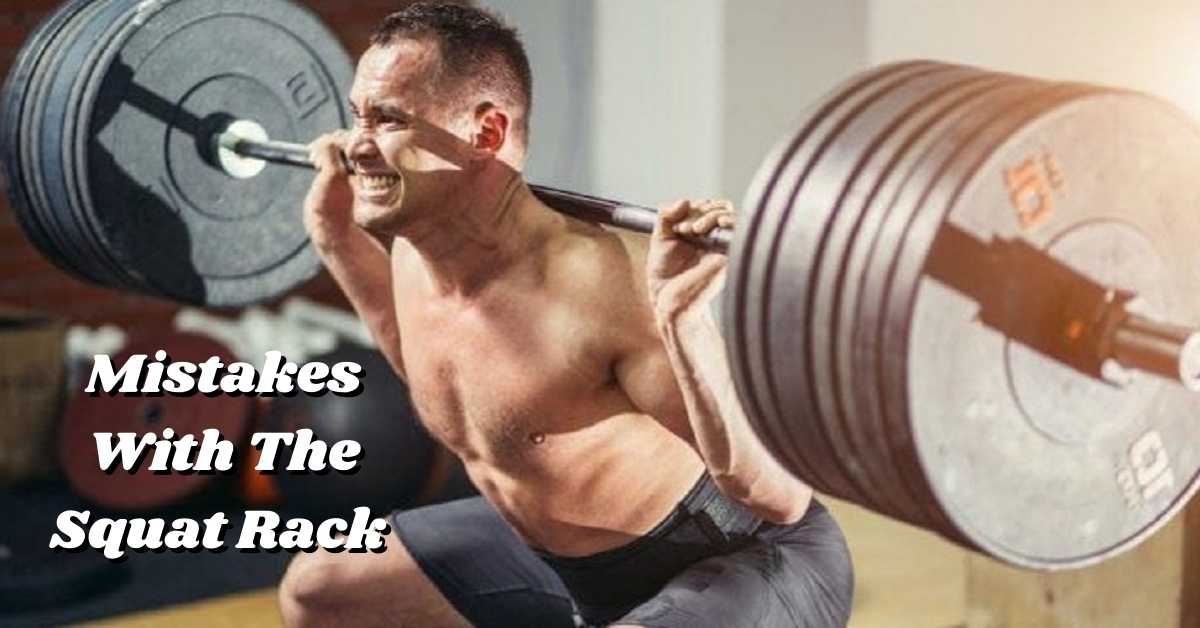Want to increase the strength of your legs by squatting and lifting bigger weights? A squat rack, on the other hand, is an excellent piece of gym equipment. With the help of a squat rack, you can carry a barbell while doing squats.
Despite the fact that most gyms feature a squat rack, the issue remains whether or not Planet Fitness has squat racks. Yes, there is a kind of answer to that question. Even while Planet Fitness does not have squat racks, they do have Smith Machines, which may be utilized for workouts that are quite comparable. More information on why Planet Fitness eliminated the squat racks and why they are no longer available in the company’s newest gym locations can be found below.
In addition, we’ll tell you about the Smith Machines, which may be used to do workouts similar to squat racks.
Is Squat Rack Available at Planet Fitness?
Planet Fitness has existed since 1992. With hundreds of franchise fitness clubs across the globe, they provide a range of gym equipment such as treadmills, elliptical, etc., and amenities such as Total Body Enhancement machines and Black Card membership hydro massage machines, depending on the club you go to.
One gym item not common to all Planet Fitness locations is the squat rack.
A few years ago, Planet Fitness gyms featured a squat rack. Nowadays, however, it’s unlikely you’ll ever see a squat rack at Planet Fitness.
A squat rack may be utilized without a human spotter when setting safety pins or bars correctly. That may be a solid reason Planet Fitness had them before. Plus, working out legs that contain the body’s biggest muscle is a fantastic method to become fit. Overall, the squat rack is great workout equipment in any gym.
WHAT IS A SQUAT RACK?

First and foremost, let us discuss the squat rack alternative and some of its benefits. A squat rack is sometimes referred to as a squat stand, which is a more formal term. That’s because, although a squat rack seems to be fairly straightforward, it can be modified by adding accessories such as regular J-cups or even flat J-cups to the mix.
Typically, pull-up bars that run across the width of the squat rack are provided, with a choice of fat or thin bar option depending on the model (in some cases, both options are included).
Because of the differences in brand or design, you may not notice much of an improvement in the performance of a squat rack when compared to a squat stand or vice versa. This is because a squat rack has the same structural basis as a power rack.
Alternative Squat Rack at Planet Fitness

Even with squat racks out of the picture, Planet Fitness could still work on more difficult squats. You may still utilize other machines. One is the Smith machine. Smith is multi-use equipment that can function as a bench press, squat rack, etc.
These machines have the weight connected to the machine and are safer to use, particularly without a trainer or spotter.
Due to restricted motion range, some individuals don’t enjoy the Smith machine. Still helpful, however, it may be utilized to develop muscles in your legs. Smith’s machine is also safer and simpler to figure out as a novice.
Another alternative is to utilize your squats and lungs’ free weights. Free weights aren’t only helpful for biceps and triceps. They may also challenge other workouts like squats and lunges.
You may also use the pressing machine. Although it may not be a perfect replacement for squats, it may nonetheless help you work out your legs. The main difference is that leg presses concentrate on simply moving the legs. Squats also work other muscular areas, such as the abs and hips, which are not often visible.
What Are The Power Rack Pros And Cons?

1) MORE VARIETY FOR EXERCISES
An Olympic weightlifting rack may be more appropriate for you if your training approach is focused on Olympic weightlifting movements, which are popular in Cross Fit. Some people find it simpler to re-rack their weight on a squat rack if this is the only thing they are concentrating on.
2) WIDER SUPPORT
With its larger base and other bars, the squat rack or half rack provides an extra layer of support without making the user feel too confined or restricted. This would be essential if you were to use higher weight loads constantly regularly.
3) BUDGET-FRIENDLY
A squat rack is a cost-effective choice for home gyms because it requires fewer components and provides a suitable starting position for most home gym exercises. Quality squat racks may be found for sale for as little as $400, with some going for as much as $800 or even more.
4) WEIGHT LIMIT
Squat racks have a greater weight restriction than squat stands, but it’s always a good idea to double-check before investing in any new fitness equipment. First, select a squat rack that has a maximum weight capacity of no less than 1,000 pounds.
Home Gym Squat Rack

Squat racks for the home are not necessarily any different from the squat racks you might find at a commercial gym, as you would expect. However, squat Racks without the bells and whistles (additional attachments) will suffice if you are new to the sport of squatting.
For serious weightlifters who want to use all of the attachments in the future, a Power Rack may be a better choice than an Olympic barbell system. Everything is dependent on your tastes, skills, available space, and financial resources. Preparation is essential before buying a squat rack for your home gym to ensure that it fits your requirements and get from a reputable manufacturer.
Workout Racks

When you are doing squats and other exercises, workout racks are huge pieces of equipment that provide safety and security for you and your fellow athletes. Depending on the type and kind of exercise rack you choose, the cost of a workout rack may vary significantly. For example, training racks with additional add-ons, such as benches, lat pulldowns, and other attachments will be more expensive than a basic workout rack without these features. Squat racks, power racks, and power cages are examples of exercise racks.
Barbell Rack

The term “barbell rack” may refer to either the exercise rack itself or a separate rack for storing barbells. The racks may be wall-mounted, vertical, or horizontal, and are made of metal or wood. If you have one barbell, then putting it in your exercise rack should be adequate storage space. However, if you have any barbells, a barbell rack would be a smart investment to keep them all organized and your training area safe and secure.
Squat Rack with Pulley
A Squat Rack with Pulley is a kind of power rack equipped with a cable or pulley system. Pulleys are available in both high and low configurations. And they may be used to execute an array of workouts ranging from Biceps Curls to Lat Pulldowns.
Mistakes With The Squat Rack May Result In Painful Injuries.

What’s worse than having to wait for a place at the ever-popular squat rack for an hour and forty-five minutes? Acquiring a good amount of space and then immediately losing your balance and limping away with an injury.
A squat rack is a fantastic tool for developing your lower body (which is why it’s usually so crowded), but like any other gym equipment, if it’s not used correctly, it may cause severe injury.
Our team spoke with Kristopher Brathwaite, an ACE-certified personal trainer at the New York Health and Racquet Club, about the three most frequent errors people make while squatting to avoid accidents throughout their workout.
Excessive Knee Valgus
According to Brathwaite, this phrase refers to the fact that your knees are sinking inwards toward the midline of your body.
As Brathwaite explains, “A problem like this may result in damage to the tissues responsible for generating knee stability – MCL and ACL tears are the first things that spring to mind, particularly in sportsmen.”
“When more dynamic movements/activities include stopping on a dime and changing directions, how we train the body affects how the body will perform.”
Squatting Too Low
Squats with your a** to the grass should be avoided. Since a result, according to Brathwaite, the squatter should avoid lowering their hips/buttocks below the level of the knees, as this may cause back strains or ruptured discs in the process.
Instead, Brathwaite recommends squatting to a 90-degree angle to maximize results. In addition, he explains that a correct 90-degree angle between the shoulder, hip, and knee joints would accomplish the same effect while placing less stress on the joints.
Ignoring the Safety Arms
Brathwaite adds most commercial gyms and private training studios include a multi-purpose squat rack—and these squat racks usually have two long arms on each side of the rack.
“These arms were intended to help you improperly release the weight at the bottom of squats when you’re tired or the weight is too much to pull you back upright,” he says.
“I frequently observe starting to use intermediate squatters and dropping weight off their back, falling back with weight.” This, he adds, may create many different bodily problems. So instead, use the safety bars, or contact a qualified personal trainer for optimal practices.
There are a few more things you can do to make sure your squat rack time is effective. Warm-up for starters! “I recommend hip-opener stretches, core bracing methods, bodyweight squats, and a weighted warm-up session,” adds Brathwaite.
“This will guarantee that you can achieve an optimum range of motion without feeling tight, minimize compensation by using other muscle groups, and more significantly, ‘wake up the muscle groups we’re going to utilize.”
You may also want to try starting your exercise with your squats.
“The reason for this is because of the squat’s intricacy and the need of all muscle groups cooperating to perform the action correctly,” he adds.
So, to avoid damage, Brathwaite recommends doing this workout when you’re not wary of eating a meal 45 minutes to an hour prior.
How to Set up a Squat Rack Workout Plan Properly?

Step 1
If you are utilizing the rack for the first time, check to see that it can support the weight plates. For example, let the heavy barbell fall from about 10 inches above the ground and see how it holds up. Keep in mind that the squat rack is intended to keep you safe. So it should hold much weight, much more than you lift.
This is also essential for your thinking. Many fitness experts believe that if you’re confident you’re protected in case of failure. You’ll more likely dare lift the greater weight. So feeling secure in exercise is as essential as being safe.
Step 2
Install the J-Hooks at the appropriate height. Usually, individuals place it a few inches below their shoulders. However, please don’t put it too low to get out easily. If you have to tiptoe to pull the bar out of the rack, it indicates you’ve put the hooks too high.
Why is it important? First, you shouldn’t tiptoe at any time since it impacts your equilibrium. Second, you may be too tired to tiptoe to miss one of the hooks.
Step 3
Maintain the position of the J-hooks – some squat racks have reference holes that help with this. Gun racks are a little tougher to operate, so you may avoid them if you’re a novice.
Step 4
It’s time to bring up the subject of safety. Those who are just starting started should use a power rack or power cage. Power cages provide greater protection than a squat stand in terms of injury prevention.
Step 5
Each conventional power rack has safety pins or bar catches (it looks like there are a million ways to call those). You’ll need to lower them a couple of inches below your lowest squat posture to get the best results. You can figure it out by doing an air squat. As a result, while you do a complete squat, the bar will not come into contact with the safety pins, but if you fall or lose your balance, the safety pins will prevent the bar from pinning you to the ground.
You may also rely on those safety pins if you have to leave. Just let go of the bar and get to your feet. Even if you are utilizing the incorrect form and begin to tumble forward, the safety pins will hold you in place. But, of course, it is only possible if the pins are set to enable you to be nabbed.
Step 6
To bring the barbell back in, you must first press the bar against the J-hooks and then lower it to the floor. You should avoid attempting to land it on one side at a time. Instead, push the bar into the cage, and then lower the bar until it is firmly fastened on both hooks.
Things Needed
- Using either a power cage or squat rack with one full-frame is suggested (often a pull-up bar). Nonetheless, a squat rack with an “A” frame can suffice as long as you don’t go too far away from it throughout your workout.
- Olympic weightlifting bar (optional).
- Weights
I’m not the most physically fit person on the planet. I go to the gym daily, but I’m not a bodybuilder, so it’s not my thing. So when I first saw a squat rack, I was a little perplexed about using it properly.
Fortunately, the gym is teeming with individuals who are much more knowledgeable than I am. Finally, I saw someone using it and was blown away by how much it aided them in their exercise.
Are you interested in learning how to utilize a squat rack? Before you buy a squat rack or utilize one at the gym, you need to be familiar with using it properly.
A squat rack is a piece of equipment that assists those who want to lift weights or do short lifts. It is often a metal stand that holds a barbell and different weights of varying sizes.
When you’re ready to utilize it, just put a barbell with or without weights on the rack and position yourself below it. Place your shoulders under the barbell and go into a squatting position by rising up and then falling to the ground. This position will assist you in determining how high or low you should place your weights. –
You’ve now experienced utilizing a squat rack in a different way, which makes it easier to recommend to a friend. Did you realize there are many others? Examine the following five examples of how to utilize a squat rack.
The Following Are A Few Of Important Considerations
- Squat racks should not be used for curls or upright rows of any kind.
- Don’t do weighted squats without the assistance of a spotter, whether that’s another person or an appropriately constructed squat rack.
- The majority of mishaps occur during the process of racking and unracking. Keep an eye out for them, and preferably have someone point you in the right direction.
In Conclusion
Several benefits of squatting include the fact that it increases muscular mass across your whole body, improves mobility and balance, aids in real-world tasks, improves overall sports performance, and aids in eliminating waste products. Isn’t it incredible?
Power squats may seem to be a hazardous workout at first glance. But they are not if you follow all of the safety rules that are in place. It just takes a few minutes to understand how to utilize a squat rack. And we hope that we have covered all you need to know in this article to get you started.
We hope you found this lesson to be of assistance. What do you want to achieve in terms of fitness in the future?